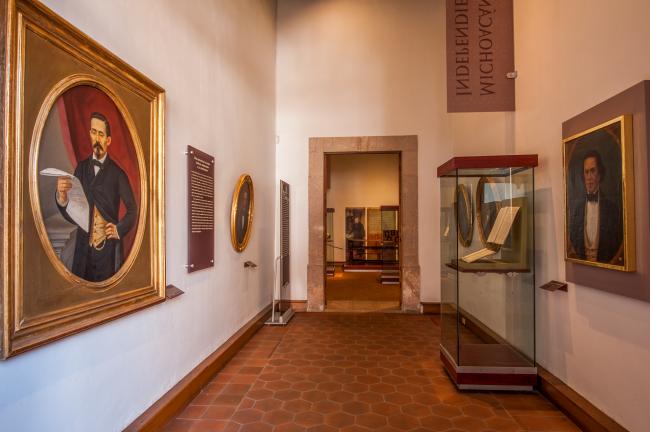
Independent Michoacán
Sala
This gallery covers the 19th century, a time when two visions of the young nation—Federalism and Centralism—vied for supremacy, and Michoacán fought to defend its sovereignty against foreign interference.
Michoacán After Independence
After eleven years of war, Michoacán—like the rest of Mexico—faced severe hardship. Fields lay fallow, commerce had ground to a halt, and the rich mines of Tlalpujahua and Angangueo were largely inactive, their equipment often deliberately sabotaged by rival factions. Livestock herds declined, and the province was in chaos.
Peace finally arrived with the signing of the Act of Independence under the banner of the Three Guarantees: Independence, Religion, and Union. By 1824, with the establishment of Mexico’s first federal republic, Michoacán became one of the original seventeen states. On August 6, 1825, its first constitutional congress convened, naming Antonio de Castro as governor and rebel veteran José Trinidad Salgado as vice-governor. The state then began the slow, challenging work of rebuilding.
Political tensions soon emerged between Centralists and Federalists, whose ideas spread via secret lodges across Mexico. Revolts and uprisings occurred for decades as Michoacán stood firm for the federal republican model and defended its autonomy. Yet in 1836 the Centralist model prevailed nationally, winning adherents who would later support the conservative monarchist cause.


